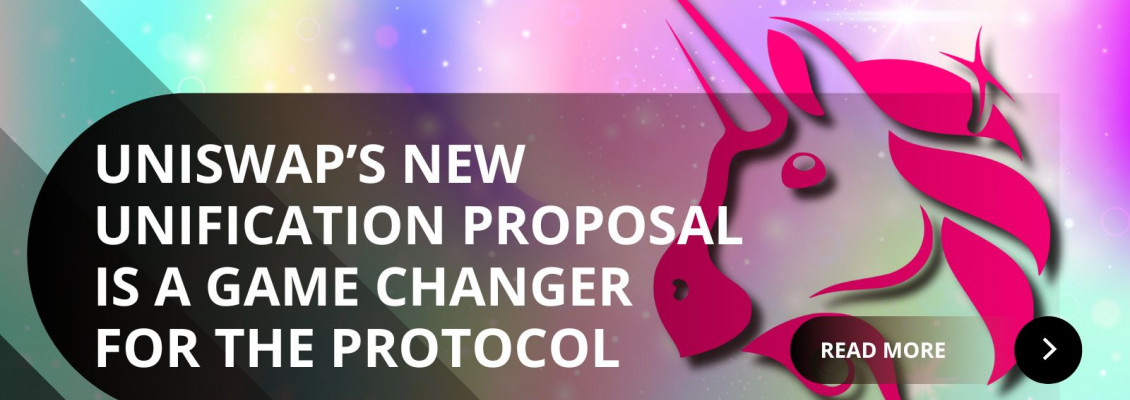
Uniswap (UNIfication) Plan: UNI Burn, Fee Overhaul and Ecosystem Reset
A New Chapter for Uniswap and UNI
The protocol behind the leading decentralized exchange, Uniswap Labs, has introduced a sweeping governance proposal named “UNIfication”. The plan would activate protocol fees, burn large volumes of its native governance token UNI, and consolidate the protocol’s leadership and development teams.
At its heart the proposal is designed to align incentives, sharpen focus on growth and position Uniswap as the default exchange for tokenized assets. It marks a significant evolution for a protocol that has been dominant in DeFi but long-standing questions have remained about its tokenomics and monetization model.
Key Elements of the Proposal
UNI Token Burn
A major feature of the proposal is the retroactive burn of 100 million UNI tokens from the treasury. The team has stated that this amount represents what might have been burned had protocol fees been active since launch.
Additionally a portion of future trading fees—including fees from Uniswap’s new layer-2 network, Unichain—would be redirected into the burn process. This creates deflationary pressure on the token supply and promises enhanced value capture for long-term holders.
Protocol Fee Activation and Discount Auctions
Under the proposal trading fees on the protocol would be switched on. A new mechanism called Protocol Fee Discount Auctions (PFDA) would allow traders to bid for fee discounts while also internalizing MEV (maximal extractable value) capture. The revenue generated through these mechanisms would further fuel the UNI token burn.
Team and Governance Restructuring
Uniswap Labs and the separate entity Uniswap Foundation would merge their ecosystem and product teams under a unified leadership structure. A five-member board, including founders like Hayden Adams and others, would oversee growth strategy. Product offerings such as the Uniswap interface, wallet and API would pivot from independent monetization to zero-fee access so that future monetization aligns directly with holders of the UNI token.
Expansion of Uniswap v4 and Aggregator Model
Uniswap v4 is envisioned to function as an on-chain aggregator that hooks into external liquidity sources via new “hooks” architecture. The proposal emphasizes that Uniswap will capture trading fees from external protocols, not just its own AMM pools. This broadened revenue base underpins the fee and burn mechanics.
Why This Matters for UNI Holders and DeFi
For UNI token holders this proposal offers a clearer path to value capture. The token had long been perceived primarily as a governance token with limited economic upside. By activating fees and burning tokens, Uniswap is offering a mechanism for UNI holders to benefit from protocol performance.
From a market perspective the plan signals that the protocol is moving beyond being a pure AMM to becoming comprehensive infrastructure for tokenized assets, multi-chain liquidity and on-chain aggregators. In an ecosystem where protocol revenue and tokenomics matter more than ever, the timing appears aligned with broader DeFi maturation.
What to Watch Next
-
The Snapshot-vote timeline in the Uniswap DAO for the UNIfication proposal.
-
Detailed specifications of fee activation, discount auction parameters and burn schedule.
-
Metrics on swap volume, fees generated and UNI token burn rate once changes are enacted.
-
How Uniswap v4 and Unichain adoption evolve across chains and whether liquidity aggregation materializes.
-
Price action of the UNI token as markets digests the economic redesign and tokenomics shift.
Final Thoughts
The UNIfication proposal from Uniswap marks a pivotal moment for the protocol and its governance token. By activating fees, deploying a structured burn mechanism and consolidating leadership, Uniswap is offering UNI holders a more direct link between protocol growth and value capture.
If successful, the changes could redefine how decentralized exchanges monetize and distribute value in the DeFi era. UNI could shift from a governance play to a value-bearing asset aligned with ecosystem growth. For DeFi at large it suggests that leading protocols are evolving from infrastructure into autonomous economic engines.
That said, execution is key. Merging teams, introducing fees and reorganizing tokenomics demand precision. Unlocking the full potential of UNIfication will require discipline, community support and sustained trading activity. If Uniswap pulls it off, UNI’s role and value proposition could be significantly elevated.
Stay Connected
You can stay up to date on all News, Events, and Marketing of Rare Network, including Rare Evo: America’s Premier Blockchain Conference, happening July 28th-31st, 2026 at The ARIA Resort & Casino, by following our socials on X, LinkedIn, and YouTube.

Leave a Comment